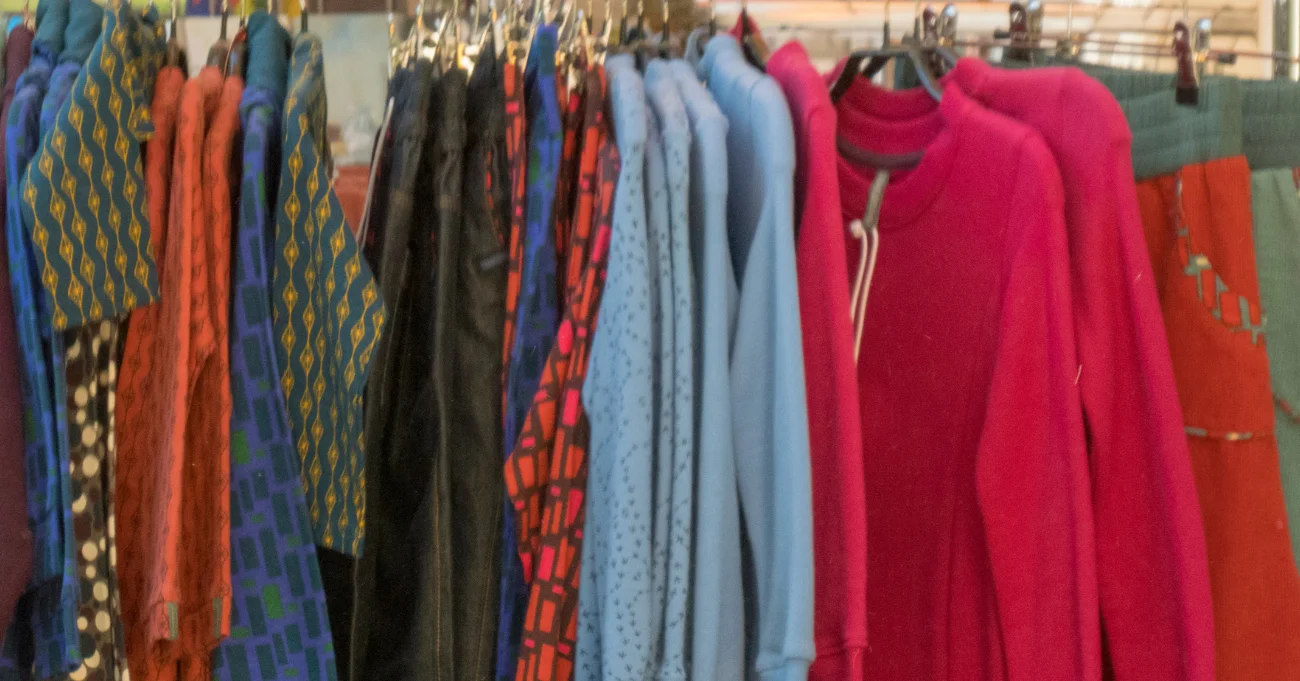The growing popularity of vintage style shirts highlights their significance for collectors and fashion enthusiasts alike. These vintage clothes showcase historical fashion moments, embodying a particular time, culture, and story. Knowing details like a single stitch, RN numbers, vintage dress styles, and clothing labels ensures collectors and sellers can distinguish genuine articles from modern imitations.
At Scalable Press, we provide an extensive print vendor network that connects businesses with the best custom vintage garment services. Our platform allows seamless order management, ensuring durability and quality in every garment. We support businesses with customizable solutions, from small tag products to modern labels, with extra attention to garment care instructions to meet customer expectations.
Drawing on our industry experience in custom apparel, we’ve created this comprehensive guide to help you identify authentic vintage style shirts. You’ll learn to examine tags and labels, recognize single-stitch vs. double-stitch seams, and assess wear and tear for authenticity. By the end of this blog, you’ll confidently distinguish genuine vintage pieces from reproductions, ensuring your collection or business investments are truly authentic.
Let’s jump in!
The Basics of Vintage Shirts
Vintage shirts are sought for their unique charm, quality, and history. Collectors and enthusiasts value these garments not just as clothing but as pieces of cultural heritage. It’s also essential for anyone looking to build a collection or appreciate the craftsmanship of the past.
What Qualifies as ‘Vintage’ Clothing?
Clothing typically considered vintage meets the following criteria:
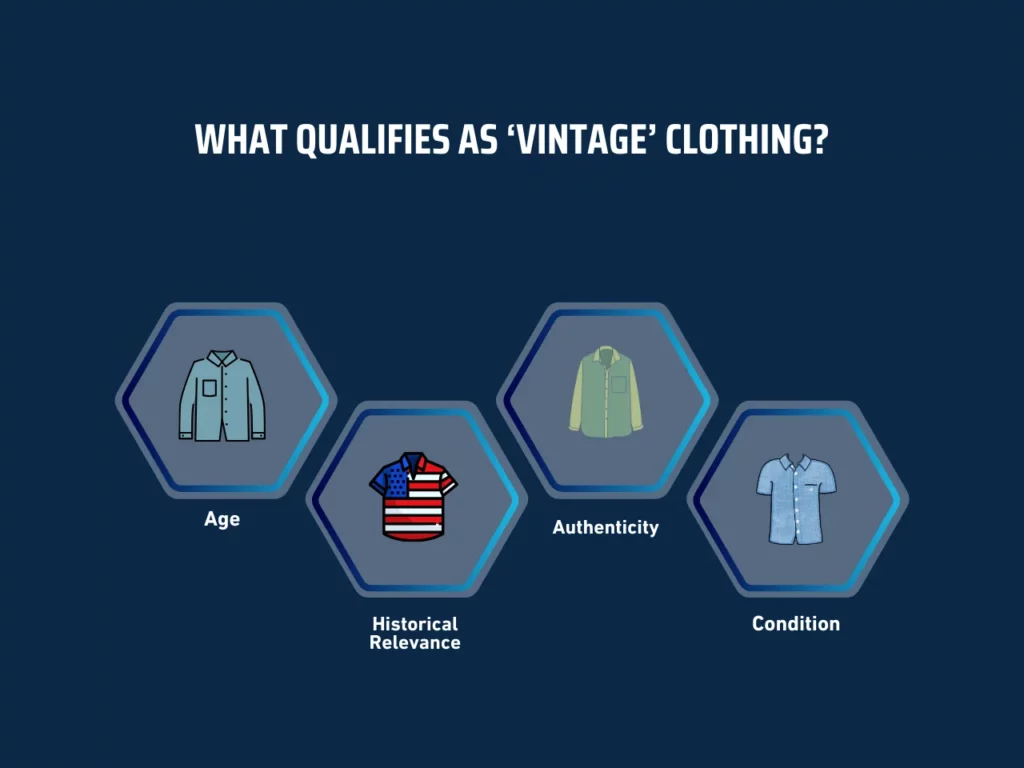
- Age: Usually 20 to 100 years old.
- Historical Relevance: Reflects the fashion trends and cultural influences of its time.
- Authenticity: Made using materials and techniques from the era it represents.
- Condition: Despite its age, it remains wearable or collectible.
Iconic Shirt Styles by Era
Each decade has brought its distinctive style to vintage style shirts. Understanding these styles helps identify authentic vintage items.
- 1920s-1930s: The 1920s brought flapper blouses, often characterized by loose fits and decorative elements. Sportswear began to gain popularity in the 1930s, featuring clean lines and practicality. These early pieces laid the foundation for vintage style shirts.
- 1940s-1950s: The post-war era saw the rise of mid-century Hawaiian and Western-style shirts. With their bold prints, Hawaiian shirts became symbols of leisure and relaxation. Western shirts, with their detailed embroidery and pointed yokes, reflected the rugged American frontier. Both styles remain iconic representations of vintage shirts from this period.
- 1960s-1970s: The 1960s and 1970s introduced graphic tees, tie-dye, and band shirts. Graphic tees became a medium for self-expression, often featuring logos, slogans, and artwork. Tie-dye emerged as a symbol of the counterculture movement with its vibrant, swirling patterns. Band shirts, especially those promoting rock bands, became essential vintage style shirts for music lovers.
- 1980s: The 1980s fashion scene was defined by the disco era, which brought polyester shirts with a distinctive shine and oversized fits. The decade embraced bold, extravagant designs, making these shirts stand out in any vintage collection.
Collectors and businesses value vintage style shirts for their uniqueness and historical significance. Whether sourcing authentic pieces or creating vintage-inspired designs, understanding the basics of these garments ensures a deeper appreciation and more informed choices in the vintage market.
Key Features of Authentic Vintage Shirts
Identifying authentic vintage style shirts requires attention to specific features that distinguish them from modern reproductions. These features include fabrics, cuts, patterns, and details like tags and stitching. Understanding these elements ensures collectors and vintage lovers recognize authentic vintage items.
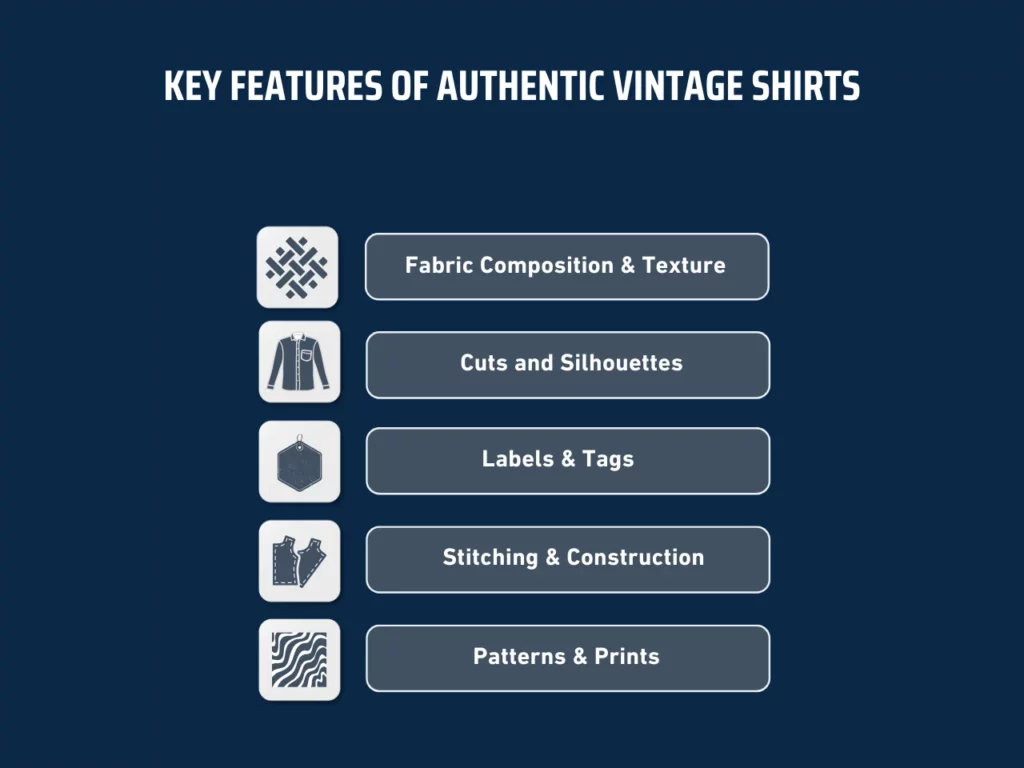
1. Fabric Composition and Texture
Authentic vintage style shirts often feature natural fabrics like cotton, linen, wool, and silk. However, as time progressed, there was a shift in fabric content and textures. For instance, rayon and polyester gained popularity from the 1940s through the 1980s. Therefore, a heavy polyester blend might indicate a shirt from the 1970s, while a lighter cotton or nylon mix might signify a shirt from the 1960s. The fabric composition provides valuable clues about the shirt’s era and origin.
2. Cuts and Silhouettes
The fit and silhouette of vintage style shirts vary significantly over the decades. The 1950s favored a boxy fit, while the 1960s and 1970s embraced slimmer cuts. Shirts from the 1980s often feature exaggerated details like shoulder pads and tight halter tops, reflecting the bold fashion trends of the time. Recognizing these styles helps identify the era of a true vintage shirt.
3. Labels and Tags
Labels provide crucial information about vintage style shirts. Look for brand names, style numbers, and care labels that reflect the standards of the time. The presence of a union label, such as ILGWU, or a Woolmark logo can indicate a shirt made in the United States during the mid-20th century. The Federal Trade Commission required manufacturers to include specific information on tags, like the zip code and fabric content, which aids in determining a shirt’s authenticity.
4. Stitching and Construction
The sewing techniques used in vintage style shirts differ from modern methods. For example, single-line stitching, commonly found in the 1960s and 1970s shirts, contrasts with double stitching in later years. French seams and carefully sewn hems also point to higher-quality, older garments.
5. Patterns and Prints
Patterns on vintage style shirts often reflect the cultural trends of their time. The 1960s and 1970s featured bold paisley and floral prints, while the 1980s embraced abstract designs and graphics. Mexican styles, often characterized by vibrant colors and intricate embroidery, became popular during this period. Recognizing these patterns and their associations with specific eras ensures more accurate identification of vintage shirts.
These key features provide a solid foundation for identifying vintage style shirts. Understanding fabric, cut, labels, stitching, and patterns ensures you can distinguish authentic vintage pieces from modern imitations, preserving the value and authenticity of your collection or inventory.
Practical Tips for Identifying Authentic Vintage Shirts
Identifying authentic vintage style shirts requires attention to detail. Examining specific characteristics, you can distinguish genuine vintage pieces from reproductions. Here are three practical tips to help you identify authentic vintage shirts and ensure your collection’s authenticity.
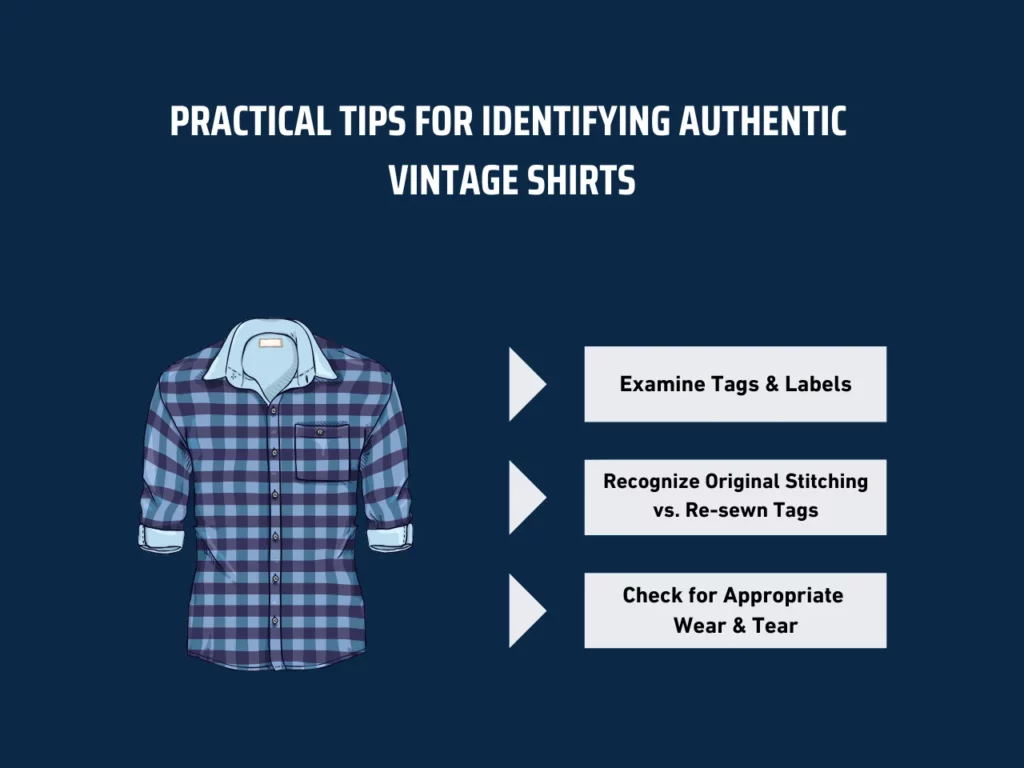
1. Examine Tags and Labels
Vintage style shirts often carry unique tags and labels that reveal much about their authenticity. Collectors and businesses alike can benefit from understanding these details. When examining tags, it’s essential to consider the shirt’s era, as this will influence the tags’ materials, fonts, and placement. These features help determine whether a shirt is truly vintage or a reproduction.
Focus on these critical elements when examining tags and labels on vintage style shirts:
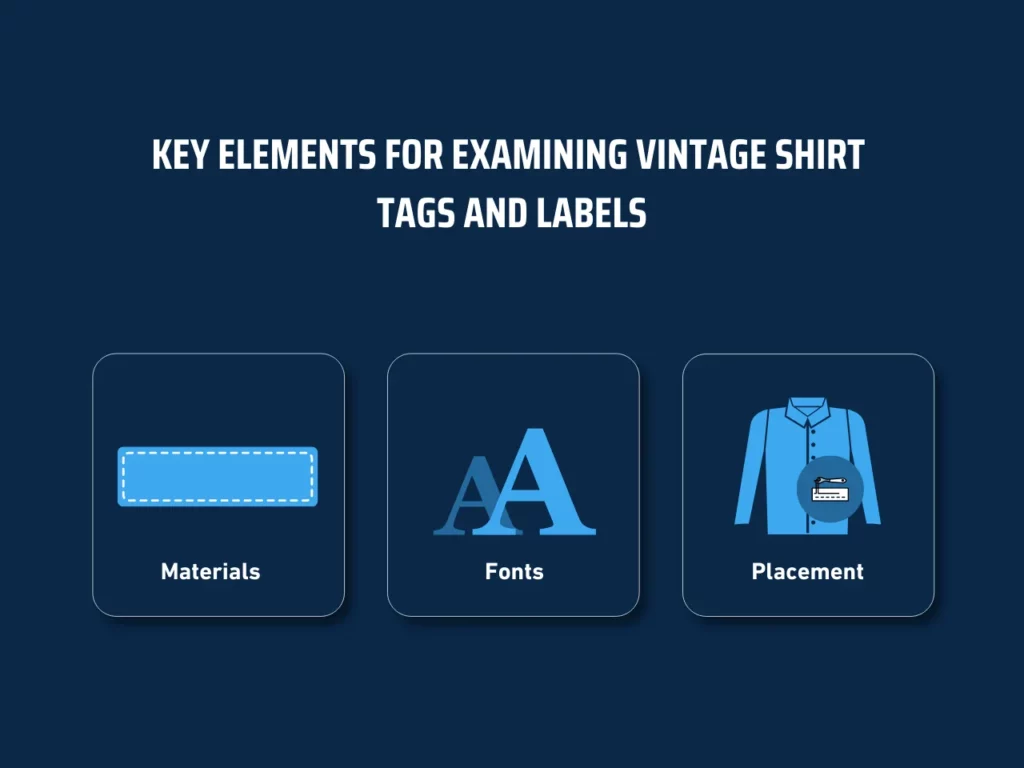
- Materials: Early vintage shirts often used cotton or linen tags, while shirts from the 1970s might feature polyester or nylon. The tag’s material can indicate the period in which the shirt was made.
- Fonts: Fonts used on tags have evolved over the decades. For example, earlier tags often featured serif fonts, while sans-serif fonts became more common in the late 20th century. A clear, consistent font style can often indicate a genuine vintage item.
- Placement: The position of the tag is another crucial detail. Vintage style shirts typically have tags sewn into the collar or side seam. Tags positioned elsewhere may suggest alterations or reproductions.
Understanding these aspects of tags and labels is vital in identifying authentic vintage style shirts. Whether you’re a collector or a business, knowing these details can help you accurately assess the value and authenticity of vintage clothing. Make it a habit to examine these small but important features closely.
2. Recognize Original Stitching vs. Re-Sewn Tags
Vintage shirts often reveal their authenticity through stitching. Distinguishing between original stitching and re-sewn tags is essential. Original stitching remains consistent, with even spacing and secure threads, whereas re-sewn tags might show irregular stitching, loose threads, or different thread colors.
The presence of reattached or altered tags may indicate potential tampering, suggesting an attempt to pass off a shirt as older or more valuable than it actually is. Here are some tips to identify re-sewn tags:
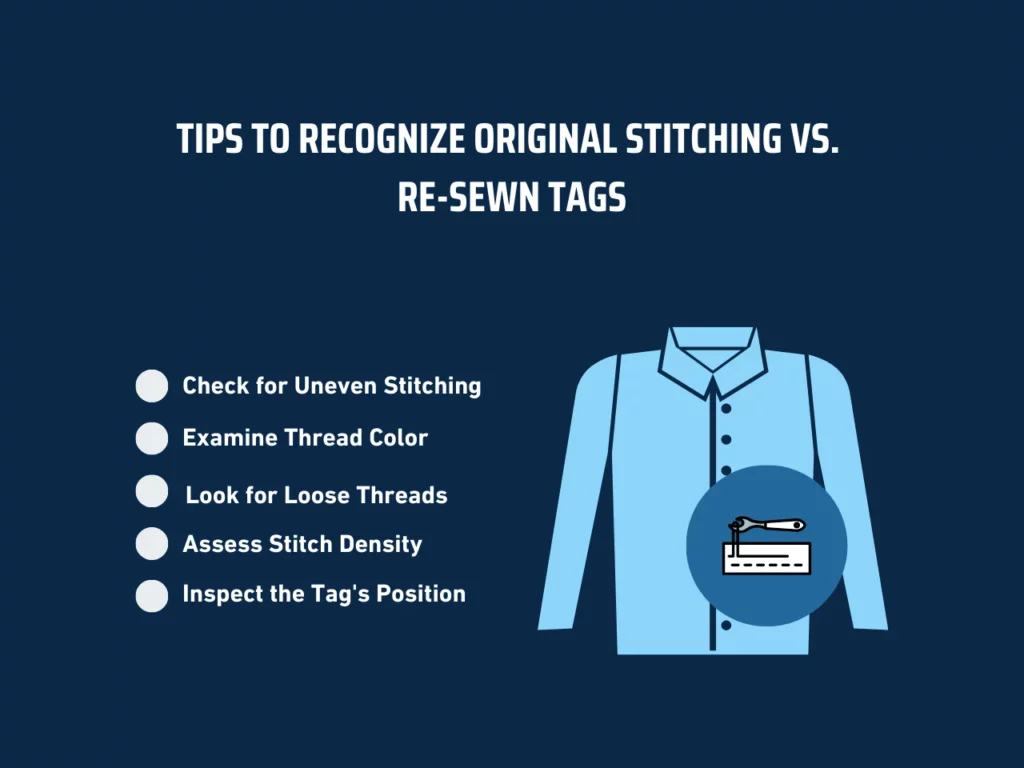
- Check for Uneven Stitching: Original tags maintain consistent stitches, so uneven stitching may indicate reattachment.
- Examine Thread Color: Original stitching uses thread that matches the shirt, while different thread colors suggest alterations.
- Look for Loose Threads: Loose or frayed threads near the tag area often point to re-sewing attempts.
- Assess Stitch Density: Original tags feature uniform stitch density, so variations could signal tampering.
- Inspect the Tag’s Position: A tag that is slightly off-center or misaligned from its original position may have been re-sewn.
After examining the tag and stitching, consider other details to confirm authenticity. Consistent wear patterns across the shirt, appropriate aging in line with its era, and the overall fabric condition contribute to a comprehensive assessment. Each element offers clues to the shirt’s true age and value, essential in distinguishing authentic vintage shirts from reproductions.
3. Check for Appropriate Wear and Tear
Examining wear and tear can provide critical clues about authenticity when assessing vintage style shirts. Genuine vintage shirts often exhibit natural aging, including fading, fabric stress, and deterioration. These signs align with the shirt’s age and history, helping collectors determine whether a piece is vintage or a reproduction.
Examine these key areas:
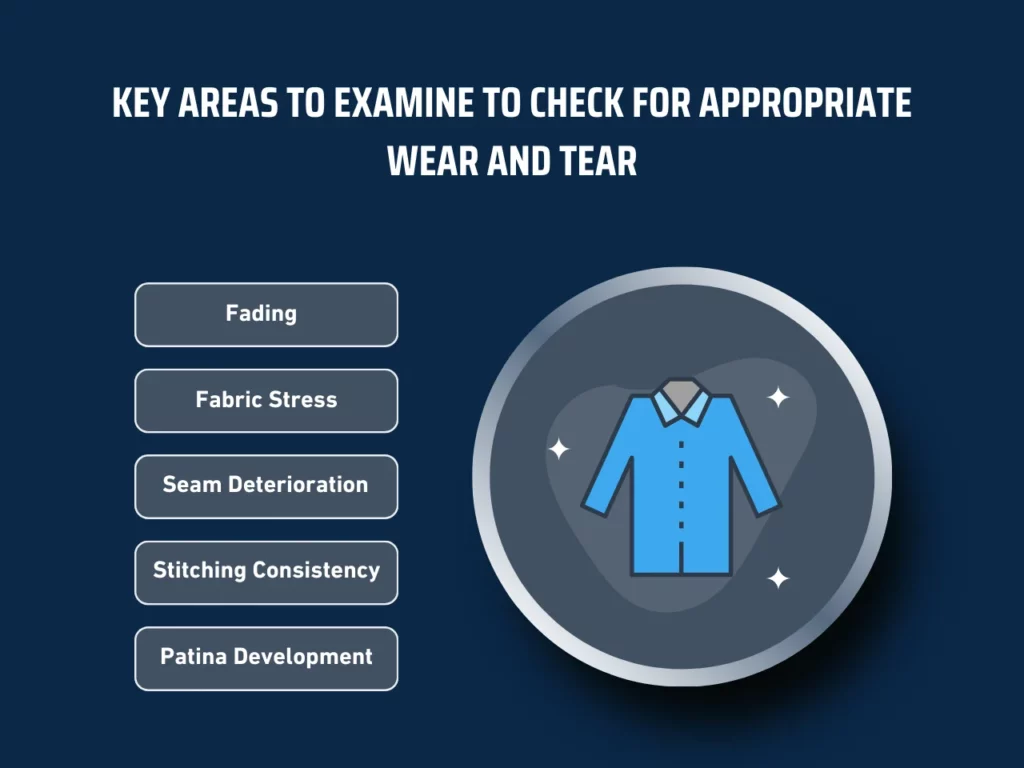
- Fading: Genuine vintage shirts often feature uneven fading, especially around the collar, shoulders, and seams. Consistent fading across the fabric suggests natural aging, while uniform or excessive fading may indicate artificial distressing.
- Fabric Stress: Look for fabric stress in high-friction areas, like underarms, cuffs, and hems. Over time, stress marks naturally develop, especially in older cotton shirts. They should show gradual weakening, not abrupt or unnatural tears.
- Seam Deterioration: Check the seams for fraying or loose threads. Natural wear results in gradual seam deterioration, often indicating the shirt’s longevity. Newly frayed seams might signal attempts to age the shirt artificially.
- Stitching Consistency: Evaluate the stitching for irregularities. Authentic vintage shirts feature consistent stitching patterns, matching the era’s manufacturing standards. Inconsistent stitching, such as mix-matched threads or uneven lines, could point to alterations or reproductions.
- Patina Development: Natural patinas, especially graphic prints, should develop with time. This involves slight cracking or fading of the design, aligning with the fabric’s overall wear. Artificial patinas often look exaggerated or poorly aligned with the shirt’s aging.
Spotting artificially aged items requires attention to detail. Artificial wear may appear in unnatural locations or display an inconsistent pattern. Fake patinas often lack the subtle, gradual aging typical of genuine vintage shirts. These signs help identify reproductions or items modified to look vintage, ensuring the authenticity of your collection.
Key Takeaway
Understanding vintage clothing proves essential for both collectors and businesses. Authentic vintage style shirts hold immense value, reflecting the fashion and culture of past decades. Businesses can harness this nostalgic appeal in their marketing technique, especially when using digital apparel printing methods to create unique, era-inspired designs.
Accurately identifying vintage shirts preserves their value and historical significance. Whether creating screen-printed shirts inspired by vintage style shirts or working with a clothing fulfillment company, the ability to recognize authentic pieces ensures the integrity and appeal of your products. This skill becomes especially crucial when targeting a discerning audience that values authenticity.
Ready to explore how vintage authenticity can elevate your brand? Scalable Press offers a wide range of customizable solutions that meet your business needs. Explore our product catalog today and discover how vintage style shirts and other unique products can enrich your promotional strategies.
